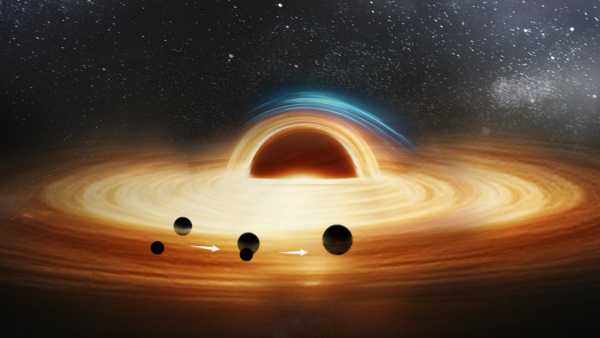
Scientists suggest that an unusual pair of colliding black holes, initially spotted in 2019, may have been orbiting a third supermassive black hole that had gone undetected. (Image: CNAS/SHAO)
Chinese researchers may have discovered a previously unknown triple black hole system.
The team identified the triplet, which is involved in a complex gravitational interaction, after discovering a hidden supermassive black hole while analyzing an anomalous gravitational wave event recorded six years ago.
In 2019, the LIGO gravitational observatory detected a series of small ripples in spacetime called gravitational waves. These disturbances were likely caused by the merger of two black holes between 544 and 912 light years from Earth. The event, GW190814, caught the attention of astronomers because of the asymmetry in the masses of the participants: one object had the mass of 23 Suns, the other only 2.6.
You may be interested in
-
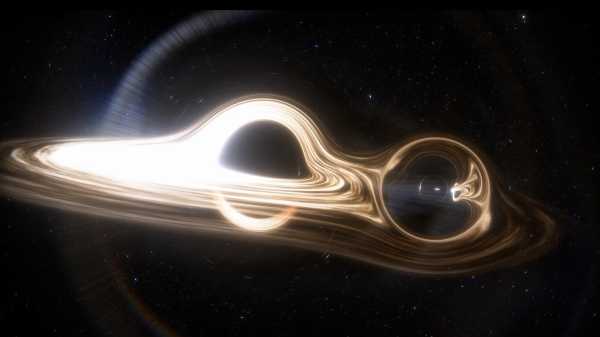
Record-breaking black hole merger creates object with 225 solar masses.
-
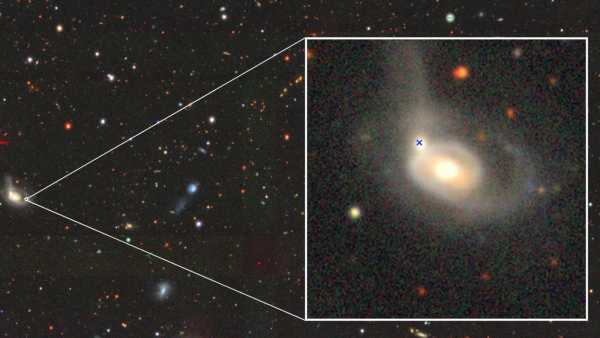
The process of destruction of a star by a black hole during a galactic cataclysm has been discovered.
-
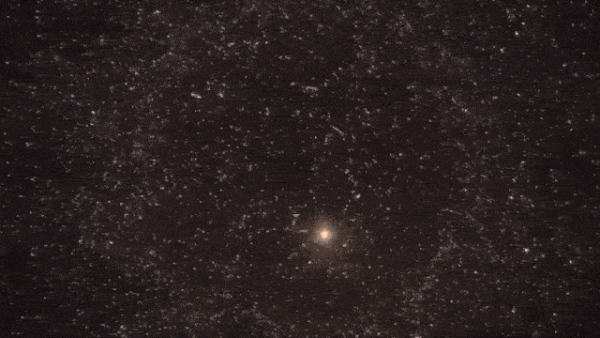
Animation of a star being swallowed by a rare type of black hole.
Typically, colliding black holes have comparable masses, which helps them merge. But GW190814 had a record-breaking mass ratio of 9:1, according to a 2020 study. What puzzled astronomers was the smaller hole, which has a mass on the border between neutron stars and black holes.
In a new paper published July 21 in the Astrophysical Journal Letters, the scientists hypothesize that the anomalous merger could have occurred due to the influence of a third hidden object that gravitationally “provoked” the unification of the asymmetric pair.
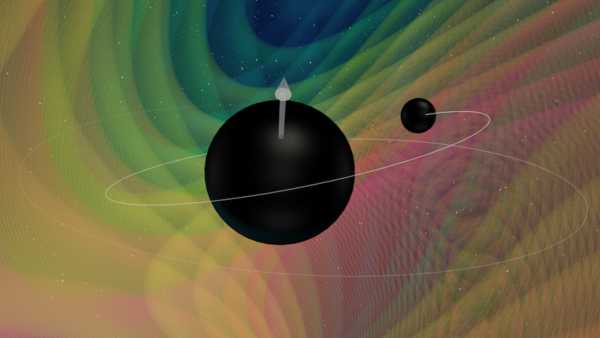
Mergers of black holes with a large mass difference are rare due to the disrupted gravitational balance.
The scientists modeled the effect of the triple interaction on gravitational waves and identified a unique signal characteristic of the presence of a third body. Subsequent analysis of LIGO data confirmed the presence of this signal.
“This is the first international study to show clear evidence of a three-component system in a binary merger,” said study co-author Wen-Biao Han. The results indicate that the GW190814 objects did not form in isolation, but in a complex gravitational environment.
According to the model, the third component is likely a supermassive black hole with a minimum mass of 100,000 solar masses, significantly larger than the two objects initially identified.
The smaller holes likely formed a binary system orbiting the supermassive one, like stars in planetary systems. This configuration had not previously been observed among black holes.
SEE ALSO
— A supermassive black hole with a mass of 36 billion Suns is one of the largest in the history of observations.
— A paperclip-sized device could reach the nearest black hole in the next century.
— The Webb telescope has discovered the oldest known black hole while studying the early universe.
The new black hole can continue to orbit its massive neighbor for billions of years before finally being swallowed up.
According to Han, the study not only explains the mechanisms by which binary systems form, but also offers a new method for searching for hidden supermassive objects in similar events.
Since 2015, LIGO has detected more than 100 gravitational events. Each discovery helps scientists unravel the mysteries of the densest objects in the Universe.
Black hole knowledge test

Harry BakerSocial Networks
Senior Science Editor at Live Science (UK). A graduate of the University of Exeter with a degree in marine biology, he covers space exploration, climate, and paleontology. Winner of the 2024 Aerospace Media Awards.
Please log in to comment.
Please sign in again to set your display name.
Exit Next
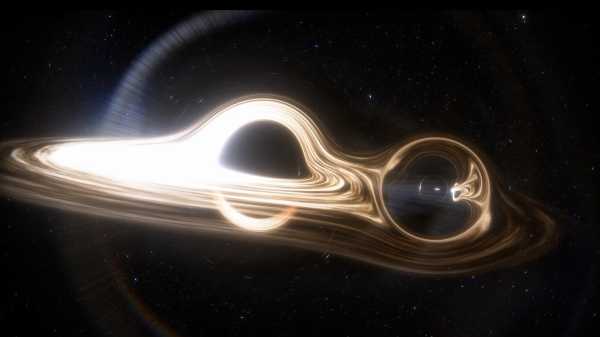
Historic Black Hole Merger Creates Object 225 Times More Massive Than the Sun
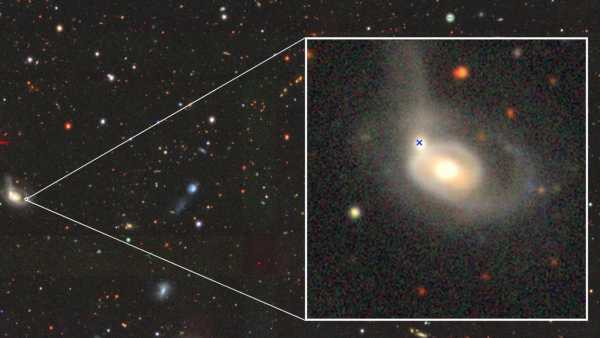
Star Destroyed by Black Hole in Galactic Catastrophe
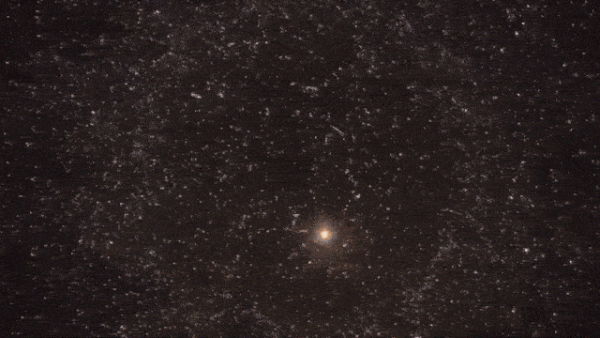
Animation of a rare black hole falling stars
Sourse: www.livescience.com





